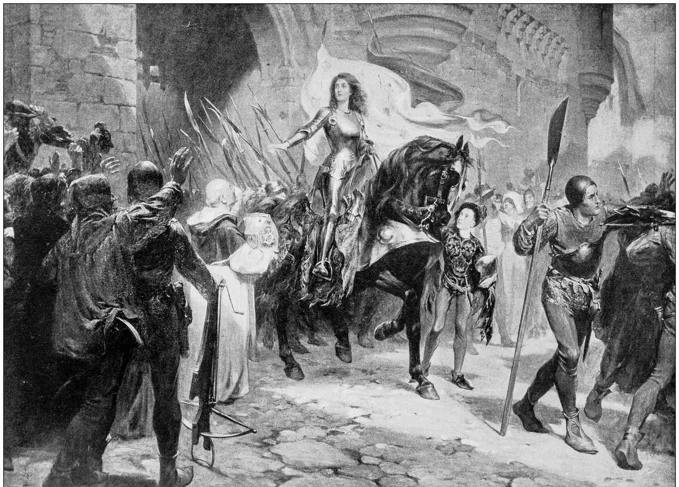Mysticism has been a mysterious and enigmatic aspect of human culture throughout history. From the ancient civilizations of Sumer and Babylon to the mystical practices of the Maya and the spiritual traditions of India and China, the origins and history of mysticism are fraught with intrigue and fascination. In this article, we will delve into the beginnings of mysticism in various ancient civilizations, explore its influence on art and architecture, and uncover the enduring legacy of this mystical phenomenon. Join us as we embark on a journey through time to uncover the secrets of the mystical traditions that have shaped our world.
The Beginnings of Mysticism

The origins of mysticism can be traced back to the ancient civilizations of Sumer, Babylon, Egypt, Mayans, and many others. In these ancient societies, mysticism was intricately woven into their religious, spiritual, and philosophical beliefs. The Sumerians and Babylonians, for instance, believed in the existence of supernatural beings and practiced divination to communicate with these entities. The Egyptians, on the other hand, had a rich tradition of mysticism centered around their intricate religious practices, such as the worship of gods like Osiris and the belief in an afterlife. The Mayans, known for their advanced astronomical knowledge, incorporated mystical rituals and ceremonies into their society. These early civilizations laid the foundation for mystical practices and beliefs that would later evolve and inspire generations to come. To explore more on ancient mystics, you can read about the magical traditions of ancient mystics and their deep connection to spirituality and the unseen forces of the universe.
The Ancient Sumerians and Babylonians
The Ancient Sumerians and Babylonians were deeply intrigued by the mysteries of the cosmos and the supernatural realm. Their belief in the existence of gods and goddesses shaped their understanding of mysticism. They believed that these divine entities held immense power and could influence the events of their world. To connect with these deities, the Sumerians and Babylonians developed elaborate rituals and practices. They built ziggurats, towering structures that served as sacred temples, where priests and priestesses would perform ceremonies to communicate with the gods. These rituals often involved the use of divination techniques, such as the interpretation of dreams, the study of celestial omens, and the casting of lots. The Sumerians and Babylonians also placed great importance on astrology, believing that celestial bodies held significant influence over human affairs. They developed astrological systems and believed that by studying the movements of the stars and planets, they could gain insights into the future and the will of the gods. The ancient Sumerians and Babylonians left behind a rich legacy of mysticism and their practices and beliefs continue to captivate our imagination to this day. To delve deeper into the intertwining of mysticism and alchemy in the ancient world, you can explore the connections between mysticism and alchemy and their shared pursuit of esoteric knowledge and spiritual transformation.
The Enigmatic Egyptians
The Enigmatic Egyptians were renowned for their intricate and elaborate mystical practices. Central to their beliefs was the idea of the afterlife and the pursuit of immortality. The ancient Egyptians believed in the existence of a multitude of gods and goddesses, and their mystical traditions were deeply intertwined with their religious ceremonies and rituals. One of the most well-known mystical traditions of the Egyptians was the process of mummification, which they believed preserved the body for the journey into the afterlife. The Book of the Dead, a collection of spells and rituals, served as a guide for the deceased to navigate the challenges they would face in the afterlife. The Egyptians also highly valued the power of symbolism and used hieroglyphs, amulets, and talismans to harness and manipulate mystical energies. The construction of grand structures like the Pyramids of Giza and the temples of Luxor and Karnak showcased the Egyptians’ dedication to creating mystical spaces that were believed to bridge the gap between the mortal and divine realms. To delve deeper into the mystical traditions and rituals surrounding death and the afterlife in ancient cultures, you can explore the article on mystical traditions and rituals in ancient cultures.
The Mysterious Mayans
The Mysterious Mayans were an ancient civilization known for their advanced knowledge in astronomy, mathematics, and their intricate understanding of the natural world. Within their complex society, mysticism played a significant role in their spiritual and religious practices. The Mayans believed in a multitude of gods and goddesses who oversaw different aspects of life, from agriculture to the celestial bodies. These deities were worshipped through elaborate rituals and ceremonies performed by knowledgeable priests and shamans. The Mayans also believed in the existence of supernatural entities and spirits that could influence human lives. They practiced divination, seeking answers and guidance from these otherworldly forces through methods such as interpreting celestial events and utilizing sacred calendars. The Mayans placed great importance on their connection to the spiritual realm, using it as a source of guidance and knowledge. They believed that by communing with the unseen world, they could gain insight into the past, present, and future. The mysticism of the Mayans was intricately tied to their cultural and religious practices, leaving behind fascinating remnants of their mystical beliefs in the form of intricate hieroglyphs, sacred sites, and ancient texts. The study of Mayan mysticism continues to captivate researchers and enthusiasts alike, offering glimpses into a world shrouded in mystery and wonder.
Mysticism in Ancient Greece
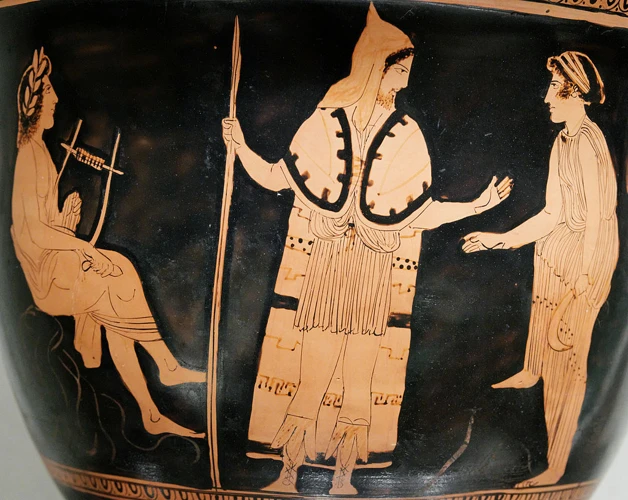
In ancient Greece, mysticism played a prominent role in spiritual and philosophical traditions. One significant mystical tradition was the Orphic tradition, attributed to the mythical figure Orpheus. This tradition emphasized the belief in the immortality of the soul and sought to attain spiritual liberation through rituals, music, and poetry. The Pythagorean school, led by Pythagoras, delved into the esoteric teachings of numbers and believed in the transmigration of souls. They sought to achieve spiritual enlightenment through the study of mathematics and music. The mystery cults, such as the Eleusinian Mysteries, offered initiates the opportunity to experience transcendence through secretive rituals that explored the cycle of life, death, and rebirth. These mystical practices in ancient Greece cultivated a deep sense of spirituality, leading individuals on a quest for divine knowledge and personal transformation.
The Orphic Tradition
The Orphic Tradition, originating in ancient Greece, was a mystical and religious movement that centered around the legendary figure of Orpheus. According to Orphic beliefs, the soul was divine and immortal, trapped in the physical body as a result of a cosmic catastrophe. The goal of followers of the Orphic Tradition was to achieve liberation of the soul from the cycle of reincarnation and reunite with the divine. The Orphics held that one’s actions in this life would determine the fate of the soul in future lives, emphasizing the importance of leading a pure and virtuous existence. Rituals played a significant role in the Orphic Tradition, employing mystic chants, music, and sacrifices. These rituals aimed to purify the soul and establish a connection with the divine realm. The Orphic Tradition was also associated with secret doctrines and mysteries, revealing hidden knowledge about the universe and its underlying principles. The philosophical aspects of this tradition influenced later thinkers and played a significant role in the development of Greek philosophical schools. The Orphic Tradition, with its focus on the divine nature of the soul and the pursuit of spiritual liberation, left an enduring impact on ancient Greek culture and spirituality.
The Pythagorean School
The Pythagorean School was a renowned ancient Greek philosophical and mystical tradition founded by the philosopher Pythagoras. This school of thought emphasized the interconnectedness of numbers, music, and the fundamental principles of the universe. Pythagoreans believed that numbers held deep mystical significance and were the key to understanding the nature of reality. They believed that everything in the cosmos could be expressed in numerical relationships and proportions, and this concept became known as the Pythagorean theorem.
The Pythagoreans also placed great importance on spiritual purification and the pursuit of knowledge and wisdom. They practiced strict codes of conduct that involved ethical principles, vegetarianism, and abstaining from certain foods. They believed in the immortality of the soul and sought to free themselves from the cycle of reincarnation through the rigorous study of mathematics, music, and philosophy. Members of the Pythagorean School lived in communes where they shared their knowledge and lived simple, ascetic lives.
The teachings of the Pythagorean School had a profound influence on later philosophical and mystical traditions. Their ideas on the harmony of the cosmos and the mystical properties of numbers laid the foundation for the development of Western mathematics and philosophy. Their belief in the divine nature of numbers also influenced the concept of sacred geometry, which later became an essential component of mystical and esoteric traditions. For those interested in exploring the intertwining of mysticism and mathematics in the ancient world, delve into the fascinating world of the interconnection between mysticism and alchemy and how these mystical practices shaped the ancient cultures.
The Mystery Cults
The Mystery Cults were a fascinating aspect of ancient Greek mysticism. These secretive religious groups held rituals and ceremonies that were shrouded in mystery, known only to the initiated members. Among the most famous Mystery Cults were the Eleusinian Mysteries, dedicated to the goddess Demeter and her daughter Persephone. The initiates of this cult believed that by participating in the ceremonies, they would gain insight into the mysteries of life, death, and the afterlife. The details of these rituals were so closely guarded that the penalty for revealing them was death. Another influential Mystery Cult was the cult of Dionysus, the god of wine and ecstasy. Followers of this cult engaged in ecstatic rituals, including dancing, music, and the consumption of wine, to commune with and honor their deity. The mystery cults played a significant role in Greek society as they provided a sense of spiritual connection, personal enlightenment, and the promise of a better afterlife. They offered a unique opportunity for individuals to escape the mundane and connect with the divine.
Mysticism in Ancient India
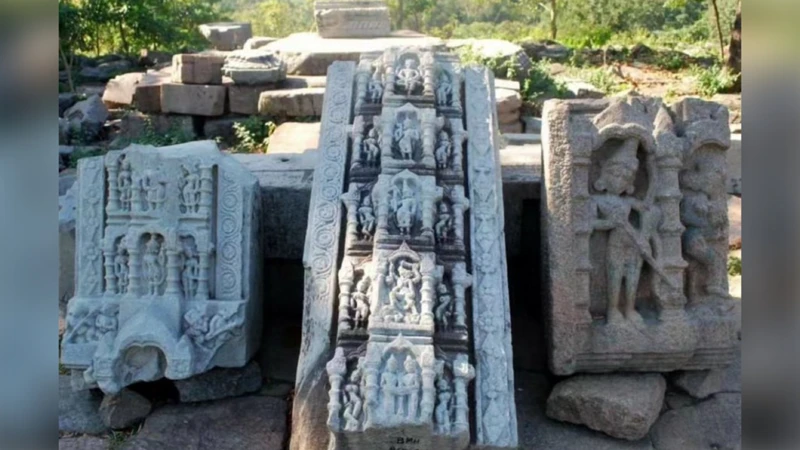
Ancient India has a rich and diverse history of mysticism that spans several millennia. Mysticism in India can be traced back to the Vedic period, which began around 1500 BCE. The Vedas, ancient Sanskrit texts, form the foundation of Indian mysticism and contain hymns, rituals, and philosophical teachings. The Upanishads, a collection of texts that followed the Vedas, delve deeper into the mystical aspects of reality and explore concepts such as Brahman (the ultimate reality) and Atman (the individual soul). The Upanishads emphasize the practice of meditation and the realization of one’s true nature as a means to attain liberation from the cycle of birth and death. Another significant development in Indian mysticism was the Bhakti movement, which emerged around the 7th century CE. This movement emphasized devotion and love for a personal deity, allowing individuals to experience a deep emotional connection with the divine. Mystical practices such as mantra chanting, meditation, and ecstatic dancing became prevalent during this period. The profound mystical traditions in ancient India continue to inspire spiritual seekers around the world to this day.
The Vedic Period
The Vedic Period was a crucial time in the development of mysticism in ancient India. It spanned from around 1500 BCE to 500 BCE and was characterized by the composition of the sacred texts known as the Vedas. These texts, written in Sanskrit, contained hymns, prayers, and rituals that formed the foundation of Vedic mysticism. The Vedas were considered to be divinely revealed and were seen as a direct connection to the gods. The Vedic mystics, known as the rishis, played a pivotal role in interpreting and transmitting the wisdom contained within the Vedas. They were regarded as enlightened individuals who had the ability to commune with the divine and gain insights into the nature of reality. Through their intense rituals, ascetic practices, and meditative techniques, the rishis sought to unlock the secrets of the universe and attain higher states of consciousness. The Vedic Period also saw the emergence of important concepts like karma and reincarnation, which are central to Hindu philosophy and mysticism. These concepts emphasized the idea of cause and effect and the cyclical nature of existence. The Vedic Period laid the groundwork for the later development of mystical traditions in India, shaping the spiritual landscape of the subcontinent for centuries to come.
The Upanishads
The Upanishads are a collection of sacred Hindu texts that form the core philosophical teachings of ancient India. Composed between 800 and 200 BCE, these texts explore profound metaphysical concepts and delve into the nature of reality, consciousness, and the self. The Upanishads emphasize the interconnectedness of all beings and the ultimate quest for spiritual enlightenment. The word “Upanishad” itself means “sitting down near,” indicating a student’s humble posture before a spiritual teacher. These texts are written in the form of dialogues between a guru (teacher) and a shishya (disciple). The Upanishads delve deep into subjects such as the nature of Brahman (the ultimate reality), Atman (the individual self), and the concept of moksha (liberation from the cycle of birth and death). They provide profound insights into the nature of existence, consciousness, and the path to self-realization. Some prominent Upanishads include the Brihadaranyaka Upanishad, the Chandogya Upanishad, and the Katha Upanishad. These ancient texts continue to be revered and studied by spiritual seekers and philosophers, offering timeless wisdom and guidance in the pursuit of spiritual enlightenment.
The Bhakti Movement
The Bhakti Movement was a significant mystical and devotional movement that emerged in ancient India. It originated around the 7th century CE and reached its peak during the medieval period. The word “bhakti” translates to “devotion” in English, and this movement emphasized the importance of having a profound, personal, and loving relationship with the divine. It was a reaction against the rigid caste system and complex rituals of Hinduism at the time, advocating for a more accessible and inclusive approach to spirituality.
The Bhakti Movement encouraged individuals to cultivate a deep sense of devotion and surrender to their chosen deity or deities. It aimed to transcend social barriers and promote unity among people through the power of love and devotion. Bhakti poets composed beautiful songs and verses in regional languages, allowing people from all strata of society to connect with the divine in their own language and cultural context. These devotional songs, known as bhajans, expressed the intense love and longing for the divine and served as a means of personal and communal transformation.
Prominent saints and mystics played a crucial role in the Bhakti Movement. They taught the principles of equality, love, and acceptance, emphasizing that anyone, regardless of caste or social status, could attain spiritual liberation through devotion. These saints, such as Mirabai, Kabir, and Tukaram, inspired a multitude of followers and ignited a renaissance of mystical devotion across the Indian subcontinent.
The impact of the Bhakti Movement on Indian society was profound. It challenged the existing social norms and hierarchies, promoting a more egalitarian and inclusive approach to spirituality. It encouraged people to focus on the essence of divine love rather than getting caught up in religious rituals and dogmas. The Bhakti Movement also paved the way for the emergence of other mystical traditions, such as Sufism in Islamic culture, which shows the far-reaching influence of this devotional movement.
The Bhakti Movement brought a transformative shift in the religious and social landscape of ancient India. Its emphasis on personal devotion, love, and inclusivity continues to inspire and resonate with millions of people to this day. The profound impact of the Bhakti Movement is a testament to the power of heartfelt devotion and its ability to transcend societal divisions and connect individuals with the divine.
Mysticism in Ancient China
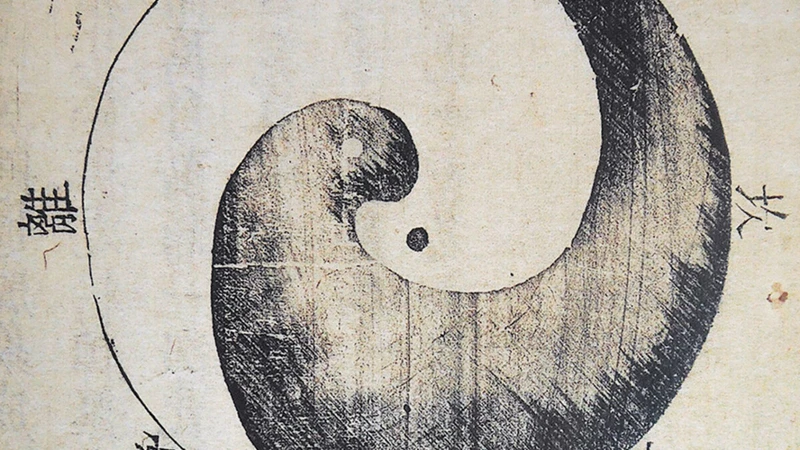
Ancient China has a rich tradition of mysticism that encompasses various philosophical and spiritual practices. Taoism, one of the prominent mystical traditions in China, is rooted in the pursuit of harmony with the natural world. At the heart of Taoist mysticism is the timeless text known as the Tao Te Ching, attributed to the sage Lao Tzu. This philosophical masterpiece delves into the concept of “the Tao” or “the Way,” emphasizing the importance of balance, simplicity, and living in alignment with the natural flow of life. Divination was another integral aspect of mysticism in ancient China, with the use of the I Ching or “Book of Changes” for guidance and insight. Confucianism, while not strictly a mystical tradition, also had a significant influence in China, especially in shaping social ethics and moral values. These diverse mystical beliefs and practices in ancient China reflected the intricate tapestry of spiritual exploration and philosophical contemplation that permeated the society.
Taoism and the Tao Te Ching
Taoism is an ancient Chinese mystical tradition deeply rooted in the philosophy of the Tao Te Ching. The Tao Te Ching, written by the sage Lao Tzu, is a collection of wisdom that explores the concept of the Tao, meaning “The Way.” The Tao Te Ching teaches that the Tao is the ultimate power in the universe, the source of all creation and the underlying principle that governs everything. It emphasizes living in harmony with nature and embracing the concept of Wu Wei, which means “non-action” or “effortless action.” Taoists believe that by aligning oneself with the Tao and practicing Wu Wei, one can achieve balance, inner peace, and spiritual enlightenment. The Tao Te Ching offers profound insights into the nature of reality, emphasizing the importance of simplicity, humility, and the notion of the interconnectedness of all things. Taoist practitioners strive to cultivate their inner energy, or Qi, through practices such as meditation, breathing exercises, and martial arts. The teachings of Taoism have had a profound influence on various aspects of Chinese culture, including literature, art, medicine, and martial arts. The principles of Taoism continue to inspire and guide individuals seeking harmony and spiritual growth in the modern world.
The I Ching and Divination
The I Ching, also known as the Book of Changes, holds a significant place in the realm of mysticism in Ancient China. It is a divination system that dates back more than three millennia and is based on the concept of yin and yang and the interconnectedness of all things. The I Ching consists of 64 hexagrams, each made up of six broken or unbroken lines representing yin and yang. These hexagrams serve as symbols that can be interpreted to provide guidance and insight into various aspects of life. Divination using the I Ching involves the casting of yarrow stalks, coins, or other tools to generate a hexagram. This process is then followed by consulting the corresponding text within the I Ching to gain wisdom and direction. The diviner interprets the hexagram and its changing lines to offer insights into the present situation and potential outcomes. The I Ching is considered not just a divination tool but also a philosophical and spiritual guide, encouraging individuals to embrace change, maintain balance, and align with the rhythms of the universe. Through the I Ching and the practice of divination, Ancient Chinese societies sought to discover hidden truths, gain wisdom, and navigate the complexities of life.
The Influence of Confucianism
Confucianism, with its emphasis on ethics, social harmony, and the cultivation of personal virtues, had a profound influence on mysticism in ancient China. The teachings of Confucius emphasized the importance of maintaining proper relationships and fulfilling one’s societal duties. These teachings provided a moral framework that shaped the mystical practices of the time. Confucian scholars embraced mysticism as a means to cultivate inner virtues, such as compassion, wisdom, and humility. They sought to harmonize themselves with the natural world and attain a deeper understanding of the cosmic order.
One way in which Confucianism influenced mysticism was through the practice of meditation. Confucian scholars would engage in meditation to still their minds, purify their thoughts, and cultivate inner peace. This practice allowed them to delve into their inner selves, reflect upon their actions, and align their behaviors with Confucian principles.
Another aspect of Confucian influence on mysticism was the emphasis on the pursuit of knowledge and wisdom. Confucian scholars would engage in extensive study of ancient texts, such as the Five Classics and the Four Books, to gain deep insights into the workings of the universe and the nature of human existence. This pursuit of knowledge went hand in hand with their mystical practices, as they believed that wisdom and enlightenment were intertwined.
Confucianism played a role in shaping the social structure of mystical communities. The hierarchical nature of Confucian society mirrored the organizational structure of mystical groups, with masters and disciples adhering to strict codes of conduct and showing reverence to their elders. These social dynamics within mystical communities were heavily influenced by Confucian principles of respect, obedience, and filial piety.
The influence of Confucianism on mysticism in ancient China was far-reaching. It shaped the ethical framework, meditation practices, pursuit of knowledge, and social structure within mystical communities. The teachings of Confucius served as a guiding light for mystics, allowing them to navigate the mystical realm while remaining grounded in moral and ethical principles.
Mysticism in Ancient Persia
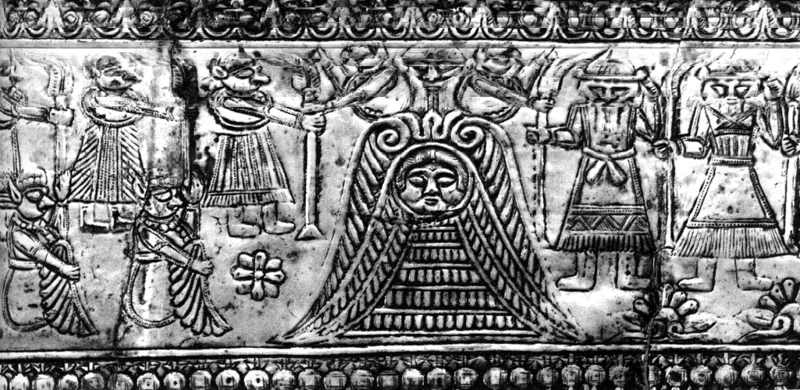
Mysticism in ancient Persia, present-day Iran, was heavily influenced by the teachings of Zarathustra, a prophet who founded Zoroastrianism. Zoroastrianism encompassed a dualistic worldview, with the belief in a cosmic battle between good and evil forces. The followers of this mystical tradition sought to align themselves with the forces of good and attain spiritual enlightenment. Esoteric traditions, such as the teachings of the Magi, also played a significant role in Persian mysticism. The Magi were revered as wise men and astrologers, and they practiced divination and mystical rituals to gain insight into the workings of the universe. Persia’s rich history of mystical practices has left a lasting impact on spiritual traditions not only within the region but also beyond its borders. To further explore the interconnections between mysticism and alchemy, you can read about how these two ancient disciplines were intricately intertwined in the ancient world.
The Zoroastrian Connection
Zoroastrianism, one of the oldest known religions, played a significant role in the development of mysticism in ancient Persia. This ancient faith, founded by the prophet Zoroaster in the 6th century BCE, emphasized the existence of a cosmic struggle between good and evil. Zoroastrianism introduced the concept of Ahura Mazda, the supreme deity associated with goodness, light, and truth, as well as Angra Mainyu, the opposing force of darkness and chaos. These dualistic principles set the stage for a deeper understanding of the spiritual realm and the search for enlightenment.
The Zoroastrian connection to mysticism can be seen through the practice of rituals and ceremonies aimed at purifying the soul and communing with divine beings. Fire, considered a symbol of purity and enlightenment, held a sacred position in Zoroastrian worship. The Zoroastrians built fire temples where the eternal flame was kept alive, serving as a focal point for meditation and spiritual reflection.
Within Zoroastrianism, the concept of mystical revelation was prominent. The Avesta, the holy scripture of Zoroastrians, contains hymns and prayers that reveal mystical insights and divine revelations granted to Zoroaster. These revelations offered followers a path towards spiritual enlightenment and a deeper understanding of the cosmic order and the role of human beings within it.
Zoroastrianism introduced eschatological beliefs about the end of the world and the ultimate triumph of good over evil. This apocalyptic vision enhanced the mystical nature of the religion, as followers sought to attain spiritual enlightenment and align themselves with the forces of good in preparation for the final battle between light and darkness.
The influence of the Zoroastrian connection on mysticism spread beyond Persia, reaching neighboring regions and even leaving a lasting impact on later mystical traditions. The complex interplay between light and dark, the pursuit of divine revelation, and the emphasis on spiritual purification all contributed to the development and growth of mystical practices in ancient Persia and beyond.
The Teachings of Zarathustra
Zoroastrianism, an ancient religion founded by Zarathustra (also known as Zoroaster), has played a significant role in the development of mysticism in ancient Persia. The teachings of Zarathustra emphasized the existence of a cosmic battle between the forces of good and evil, represented by the god Ahura Mazda and the destructive spirit, Angra Mainyu. Zarathustra believed in the importance of living a virtuous life, upholding truth, and promoting righteousness. He taught that through ethical living and adherence to moral principles, individuals could align themselves with Ahura Mazda and contribute to the triumph of good in the world. This concept of a cosmic battle between opposing forces, the pursuit of righteousness, and the belief in the ultimate triumph of good over evil became central to Zoroastrian mysticism. Rituals, prayers, and meditations were practiced as a means to connect with the divine, seek guidance, and strive for spiritual enlightenment. Zoroastrian mystics sought to transcend the mundane existence and attain a higher state of consciousness through spiritual practices, ultimately aiming to achieve union with the divine. The teachings of Zarathustra provided a framework for mystical experiences and the exploration of the spiritual realm within the context of ancient Persian culture. His philosophy not only influenced Zoroastrian mysticism but also had a profound impact on various other mystical traditions that emerged in the region throughout history.
The Esoteric Traditions
The Esoteric Traditions refer to the hidden and secret mystical teachings that were practiced in ancient Persia. These traditions were intertwined with the spiritual beliefs of the Zoroastrians and were passed down through oral and written transmission. The esoteric teachings aimed to provide deeper insights into the nature of reality, the spiritual realm, and the path to spiritual enlightenment. One of the key figures associated with these traditions is Zarathustra, also known as Zoroaster, the founder of Zoroastrianism. Zarathustra’s teachings emphasized the existence of a cosmic battle between good and evil forces and the importance of individual moral responsibility. Within the esoteric traditions, initiates would undergo various rituals and practices to attain higher levels of spiritual understanding and to connect with divine wisdom. These practices often involved meditation, purification rituals, and the study of sacred texts. The esoteric traditions played a significant role in shaping the spiritual landscape of ancient Persia and continue to inspire seekers of spiritual knowledge to this day.
The Rediscovery of Mysticism in the Renaissance
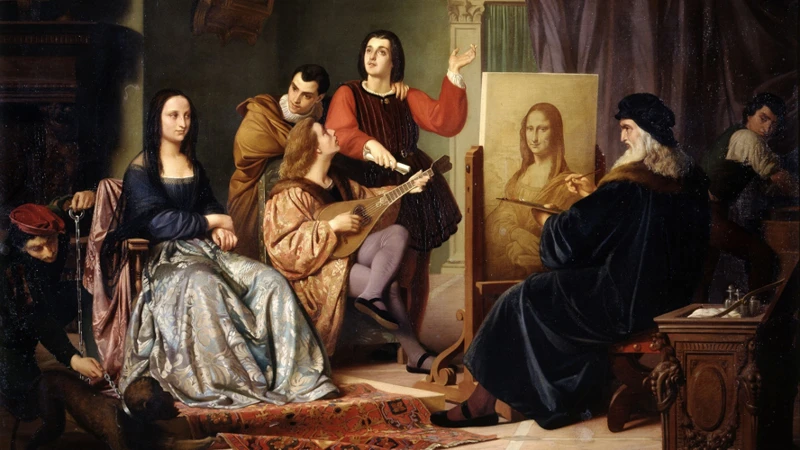
During the Renaissance, there was a profound resurgence of interest in mysticism, marking a significant shift in thought and spiritual exploration. The rediscovery of ancient texts and cultural exchanges with the East fueled a renewed fascination with mystical traditions. One prominent mystical tradition that gained attention during this period was the Hermetic tradition, inspired by the writings attributed to Hermes Trismegistus. These texts explored the interconnectedness of the spiritual and material worlds, emphasizing the power of the individual to attain spiritual enlightenment. The Kabbalah, a Jewish mystical tradition, also gained popularity among Renaissance scholars, who sought to understand the hidden truths of the universe and the divine nature of existence. Neoplatonism, a philosophical and mystical school of thought, also had a profound impact on Renaissance thinkers, influencing their ideas about the nature of reality and the human soul. The Renaissance acted as a catalyst for the revival of mysticism, sparking a renewed fascination with the mystical arts, cosmic wisdom, and the pursuit of spiritual enlightenment.
The Hermetic Tradition
The Hermetic Tradition refers to a set of mystical and philosophical teachings attributed to the legendary figure Hermes Trismegistus. This tradition emerged during the Renaissance, where ancient texts attributed to Hermes Trismegistus were translated into Latin by Marsilio Ficino and other scholars. The Hermetic texts, such as the Corpus Hermeticum, contained a wealth of esoteric knowledge encompassing a wide range of subjects, including astrology, alchemy, and spiritual enlightenment. One of the central ideas in the Hermetic Tradition is the concept of “as above, so below,” which emphasizes the interconnectedness of the macrocosm and the microcosm. This notion suggests that the laws governing the universe are mirrored in human existence. The Hermetic Tradition influenced various fields, such as medicine, alchemy, and psychology, and played a significant role in the development of Western esotericism. Practitioners sought to attain spiritual enlightenment through the study and application of Hermetic principles, striving to unlock the secrets of the universe and the nature of divinity. To explore more about the intertwining of mysticism and alchemy in the ancient world, you can read about the fascinating relationship between the two in our previous article on mysticism and alchemy in the ancient world.
The Kabbalah and Jewish Mysticism
The Kabbalah is a profound and mystical tradition within Judaism, and it forms a significant part of Jewish mysticism. It originated in the 12th century CE and has since captivated scholars and spiritual seekers alike. The word “Kabbalah” means “receiving” or “tradition,” and it focuses on a deep understanding of divine and spiritual knowledge. Scholars believe that the teachings of the Kabbalah were passed down orally for generations before being written down in various texts.
The Kabbalah delves into the study of the nature of God, the universe, and the human soul. It explores concepts such as the Sephirot, which are the ten emanations or attributes of God. Each Sephirah represents an aspect of God’s divine nature and helps humans understand the divine presence in the world. Additionally, the Kabbalah examines the Tree of Life, a symbolic representation of the interconnectedness of the Sephirot and the paths of spiritual growth.
One of the most well-known texts of the Kabbalah is the Zohar, which is considered the cornerstone of Jewish mystical thought. The Zohar is a collection of commentaries and interpretations on the Torah, the Jewish sacred text. It covers topics ranging from cosmology and angelology to the nature of the soul and the purpose of human existence.
Jewish mysticism, as encompassed by the Kabbalah, has greatly influenced not only Jewish theology but also various aspects of Western esotericism. The teachings of the Kabbalah have inspired and shaped the works of many scholars, philosophers, and mystics throughout history. It has had profound impacts on diverse fields such as literature, art, psychology, and even modern-day spirituality.
It is important to note that the study and practice of the Kabbalah require guidance from knowledgeable teachers and a deep understanding of Jewish traditions. Today, there are various schools and organizations dedicated to preserving and interpreting the teachings of the Kabbalah, ensuring that this rich mystical tradition continues to thrive.
The Kabbalah and Jewish mysticism offer profound insights into the nature of the divine and the human experience, making them essential components of the mystical traditions that have shaped our world.
The Influence of Neoplatonism
Neoplatonism, a philosophical and mystical tradition that emerged in the third century AD, played a significant role in shaping the development of mysticism in ancient civilizations. The influence of Neoplatonism can be observed in various aspects of mystical thought, particularly in the realms of metaphysics and spirituality. Neoplatonic philosophers, such as Plotinus, emphasized the concept of unity and the existence of a transcendent reality beyond the material world. This notion greatly influenced mystical traditions, as it provided a framework for understanding the divine and the spiritual realm.
One key aspect of Neoplatonism that impacted mysticism was the idea of the contemplative journey towards union with the divine. Neoplatonic thinkers believed that this union could be achieved through a process of purification and contemplation, leading to the direct experience of the ultimate reality. This idea resonated with mystics in various ancient civilizations, as they sought to transcend the limitations of the physical world and commune with the divine.
Another significant influence of Neoplatonism on mysticism was the concept of hierarchical emanations. According to Neoplatonic teachings, the divine reality emanated in a hierarchical manner, emanating from the One to the many. This understanding of emanation influenced mystical thinkers in ancient civilizations, who incorporated similar concepts into their own mystical frameworks. For example, the Kabbalistic tradition within Jewish mysticism adopted the idea of the sefirot, which are the emanations of the divine.
Neoplatonism emphasized the power of philosophical and mystical contemplation as a means of transcending the material world. This notion inspired mystics to engage in practices such as meditation, introspection, and the cultivation of inner awareness. By delving into the depths of their own consciousness, mystics sought to attain higher states of consciousness and a deeper connection with the divine.
The influence of Neoplatonism on ancient mysticism cannot be overstated. Its emphasis on unity, contemplation, and the transcendent reality provided a philosophical and spiritual foundation for mystics in various civilizations. The concepts of the contemplative journey, hierarchical emanations, and the power of contemplative practices deeply shaped the mystical traditions of ancient civilizations and continue to resonate in mystical thought to this day.
Mysticism in Ancient America: The Anasazi People
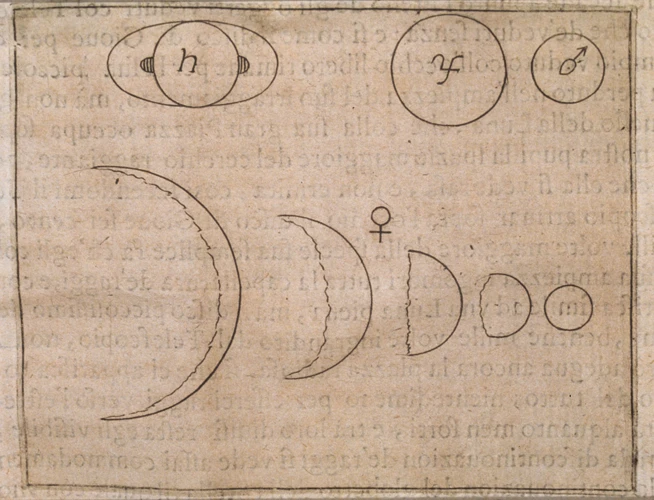
The Anasazi people, also known as the Ancient Puebloans, of ancient America were deeply connected to mysticism and spirituality. They embraced a cult of the supernatural, believing in the existence of powerful spirits and deities that influenced their daily lives and the natural world around them. Shamanic practices played a crucial role in their mystical traditions, as these spiritual leaders acted as intermediaries between the physical and spiritual realms. Through rituals and ceremonies, the Anasazi communed with the spirits, seeking guidance, healing, and protection. The Anasazi’s mystical beliefs were reflected in their intricate symbols, which adorned their pottery, rock art, and architecture. These symbols held deep meaning and connection to their spiritual worldview. The Anasazi left behind a remarkable legacy of mystical practices and beliefs that continue to pique the curiosity of modern researchers and enthusiasts alike. Explore the mystical world of the Anasazi and other ancient cultures, and discover their intriguing rituals and beliefs on the mystical traditions and rituals of death and the afterlife in ancient cultures.
The Cult of the Supernatural
The Cult of the Supernatural, prevalent among the Anasazi people of ancient America, was deeply rooted in their mystical beliefs and rituals. The Anasazi believed in a rich pantheon of supernatural beings, including gods and spirits that governed various aspects of their lives. They revered nature spirits and engaged in rituals to seek their favor for bountiful harvests and protection from natural disasters. Shamanic practices played a crucial role in the Cult of the Supernatural, as individuals with special connections to the spirit world would communicate with these beings and act as intermediaries between the mortal realm and the supernatural realm. These shamans would undergo intense spiritual journeys and trance-like states to receive visions and messages from the spirits. The Anasazi also celebrated sacred ceremonies and rituals to honor the spirits, often taking place in elaborate communal kivas, which were underground ceremonial chambers. These rituals involved chanting, dancing, and offerings to appease the supernatural forces and maintain harmony within the community. The Cult of the Supernatural was not only a belief system but a way of life, guiding the Anasazi in their daily activities and providing a sense of spiritual connection to the unseen realm.
Shamanic Practices and Spirituality
Shamanic practices and spirituality played a significant role in ancient civilizations, particularly among indigenous cultures. Shamans, the spiritual leaders and healers of these societies, acted as intermediaries between the human and spirit worlds. They possessed a deep understanding of the natural and supernatural realms, harnessing their knowledge and abilities for the well-being of their communities. Shamanic practices varied across different cultures, but commonly involved rituals, ceremonies, and trance-like states induced through drumming, chanting, or the use of hallucinogenic substances.
In many ancient civilizations, shamans were believed to communicate with spirits, ancestors, and animal guides. They were considered to have the power to heal the sick, divine the future, and retrieve lost souls. These practices were deeply rooted in animism, the belief that all beings, objects, and elements possess a spiritual essence. Shamans would embark on visionary journeys to navigate the spiritual realms and bring back guidance and insights for individuals and the community as a whole.
The role of a shaman extended beyond healing and divination. They often acted as spiritual counselors, resolving conflicts, ensuring harmony, and facilitating rites of passage such as initiations and ceremonies. Their presence was vital for the well-being and spiritual continuity of the community.
Shamanism continues to be practiced in various forms around the world, preserving ancient traditions and adapting to modern contexts. The wisdom and teachings of shamanic cultures provide valuable insights into the interconnectedness of all things and offer a profound spiritual experience for those who seek a deeper connection with the natural and supernatural realms.
The Puebloans and their Mystical Symbols
The Puebloans, a Native American civilization that thrived in the southwestern region of the present-day United States, had a profound relationship with mysticism and spirituality. Central to their mystical practices were the enigmatic symbols that adorned their architecture, pottery, and artwork. These symbols held deep meaning and were believed to connect the physical and spiritual realms. One notable symbol is the Kokopelli, a humpbacked flute player often depicted with a large headdress. The Kokopelli symbolizes fertility, joy, and the cycle of life. Another significant symbol is the Thunderbird, a powerful bird associated with rain, thunder, and protection. The spiral symbol, representing the journey of life and the interconnectedness of all things, was also prominently featured in Puebloan art. These mystical symbols were not only decorative but served as a means of communication with the divine and a way to tap into spiritual energies. The Puebloans believed that by incorporating these symbols into their daily lives, they could bring harmony and balance to their communities. To immerse yourself in the mystical world of the Puebloans and explore the deeper meanings behind their symbols, you can delve into their intricate artwork and pottery that have survived through the ages.
Mystical Practices and Rituals in Ancient Civilizations
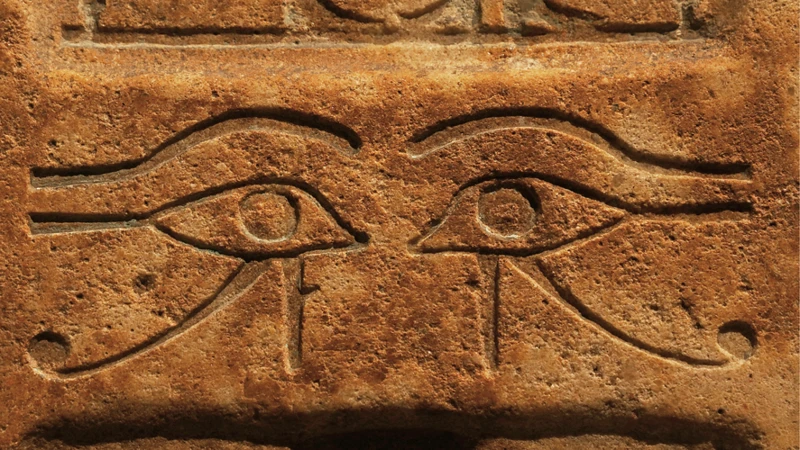
Mystical practices and rituals played a significant role in the spiritual and cultural lives of ancient civilizations. These practices and rituals were often shrouded in mystery and were performed to establish a connection with the divine, gain spiritual insight, or seek protection from negative forces. Let’s delve into some of the intriguing mystical practices and rituals of different ancient civilizations.
- The Ancient Sumerians and Babylonians: The Sumerians and Babylonians heavily relied on divination as a mystical practice. They believed that by interpreting omens, dreams, and celestial events, they could gain insight into the future and communicate with the gods. Astrology, in particular, held great significance in their mystical beliefs.
- The Egyptians: The ancient Egyptians had a complex belief system that revolved around the afterlife. They practiced elaborate funerary rites and rituals to ensure the deceased had a smooth transition into the next life. The process of mummification, accompanied by rituals and spells, aimed to preserve the body for eternal life.
- The Mayans: The Mayans were known for their extensive use of rituals to communicate with the divine. They performed ceremonies in sacred sites like pyramids and temples, involving offerings, music, dance, and bloodletting. These rituals were believed to maintain balance and harmony between the human world and the spiritual realm.
- Ancient India: In ancient India, mystical practices varied across different time periods and regions. Yogic practices, meditation, and the chanting of mantras were central to the mystical traditions. Rituals such as fire sacrifices, known as yajnas, were performed to invoke deities and receive blessings.
- Ancient China: The Chinese embraced mystical practices, such as Taoism and Confucianism, as a way to attain spiritual enlightenment. Taoist practices included meditation, breathing exercises, and the pursuit of the Tao, or the Way. Divination using the I Ching was also widely practiced.
Mystical practices and rituals varied greatly among ancient civilizations, but they all shared a sense of awe and reverence for the spiritual realm. These practices provided a means for individuals to connect with forces beyond the material world and seek guidance, protection, and spiritual fulfillment. The rituals have left a lasting impact on the cultures of these civilizations, shaping their beliefs, art, and architecture. It is through the exploration and understanding of these practices that we gain insight into the profound significance of mysticism in ancient civilizations.
The Influence of Mysticism on Art and Architecture
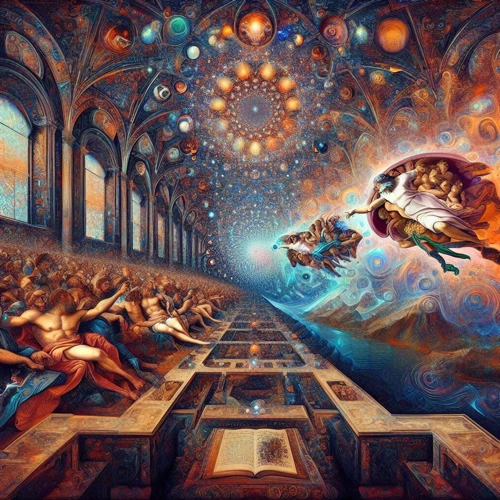
Mysticism has had a profound influence on art and architecture throughout the ages. In ancient civilizations, such as Egypt and Greece, mystical beliefs and practices played a significant role in shaping artistic expression.
In Egyptian art and architecture, the mystical concepts of life after death and the journey of the soul were central themes. The pyramids, with their intricate design and alignment with celestial bodies, were not just colossal structures but also symbolized the belief in the soul’s ascent to the heavens. The iconic Sphinx, representing the powers of both man and deity, further embodies the mystical symbolism prevalent in Egyptian art.
In ancient Greece, mysticism found its expression in the monumental temples dedicated to various gods and goddesses. These temples were not merely places of worship but also architectural marvels that reflected the belief in the divine and the transcendental nature of the gods. The Parthenon in Athens, for example, with its harmonious proportions and intricate friezes depicting mythical scenes, captures the essence of the mystical traditions of ancient Greece.
Across different civilizations, mystical symbols, such as the all-seeing eye and the mandala, found their way into various artistic mediums. In architecture, the use of sacred geometry and intricate patterns reflected a deeper connection to the divine and an attempt to express the ineffable. The influence of mysticism can be seen in the grandeur of Gothic cathedrals, with their towering spires and intricate stained glass windows depicting biblical scenes.
The mystical symbolism in art often served as a means to convey hidden messages and esoteric knowledge. In Renaissance art, for instance, the works of artists like Leonardo da Vinci and Botticelli were steeped in mystical symbolism, such as the portrayal of spiritual transformation and the quest for higher truths.
Mystical art and architecture continue to inspire and captivate audiences to this day. The interplay between mysticism and creative expression highlights the deep human longing for transcendence and the exploration of the unseen realms. It is through art and architecture that mysticism transcends the boundaries of the physical and allows individuals to glimpse into the mystical realms beyond.
| Artistic Examples | Architectural Examples |
|---|---|
| The Egyptian Sphinx | The Pyramids of Giza |
| Gothic Cathedrals of Europe | The Parthenon in Athens |
| Renaissance art with mystical symbolism | The Great Stupa at Sanchi, India |
| The works of William Blake | The Alhambra in Spain |
The Enduring Legacy of Ancient Mysticism
Ancient mysticism has left an indelible mark on human history, and its enduring legacy can be seen in various aspects of our modern world. One notable area of influence is in spirituality and esoteric traditions. Many contemporary spiritual practices and belief systems, such as New Age spirituality and neo-paganism, draw inspiration from the mystical teachings of ancient civilizations. These teachings emphasize the interconnectedness of all beings and the importance of finding inner wisdom and enlightenment.
Another area where the legacy of ancient mysticism can be seen is in the realm of philosophy and metaphysics. The concepts of the soul, the nature of reality, and the search for meaning were central themes in the mystical traditions of the past. These ideas continue to shape modern philosophical discourse, with scholars and thinkers exploring questions surrounding consciousness, existence, and the divine.
The artistic and cultural sphere is also deeply influenced by ancient mysticism. The symbolism and imagery associated with mysticism can be found in various art forms, ranging from paintings to literature and music. Artists throughout history have sought to capture the ineffable experience of the mystical journey, creating works that evoke a sense of wonder, transcendence, and spiritual contemplation.
The methods and practices of ancient mysticism have had a lasting impact on alternative healing and wellness modalities. Practices such as meditation, energy healing, and mindfulness can trace their roots back to ancient mystical traditions that sought to align the body, mind, and spirit. These practices continue to be embraced and integrated into contemporary approaches to holistic well-being and personal development.
The enduring legacy of ancient mysticism is evident in spirituality, philosophy, arts, and healing practices, among other areas. The insights and wisdom of the ancient mystics continue to resonate with individuals seeking a deeper understanding of themselves and the world around them. As we explore the richness of these mystical traditions, we have the opportunity to tap into timeless wisdom and embrace the profound connections between the past, present, and future.
Conclusion
In conclusion, the study of mysticism in ancient civilizations reveals a remarkable thread of commonality and diversity. Throughout history, mysticism has been an intrinsic aspect of human culture, permeating religious, spiritual, and philosophical beliefs. From the ancient Sumerians and Babylonians to the Egyptians, Mayans, Greeks, Indians, Persians, and beyond, mysticism has taken on various forms and practices, reflecting the unique cultural and spiritual landscapes of each civilization. The rediscovery of mysticism in the Renaissance further demonstrates the lasting impact of these ancient traditions on subsequent generations. Mysticism not only influenced religious and spiritual practices but also left an indelible mark on art, architecture, and esoteric traditions. The enduring legacy of ancient mysticism continues to captivate and inspire seekers of knowledge and truth to this day. By understanding and appreciating the origins and history of mysticism in ancient civilizations, we gain insights into the rich tapestry of human spiritual experiences throughout time. It reminds us of the universal human longing for deeper understanding, connection, and meaning in a world that often defies logic and rationality.
Frequently Asked Questions
1. What is mysticism?
Mysticism is a spiritual or religious belief system that involves the pursuit of direct, personal experience and communion with the divine or transcendental realms. It often involves practices such as meditation, contemplation, and ritual to connect with the mysteries of existence.
2. Did mysticism exist in every ancient civilization?
While mysticism may not have existed in the same form in every ancient civilization, similar mystical beliefs and practices can be found in many cultures across the globe. These practices varied in their rituals, symbolism, and philosophies, but they often shared a common thread of seeking a deeper understanding of the divine.
3. How did mysticism influence art and architecture in ancient civilizations?
Mysticism often inspired the creation of elaborate artworks and architectural structures in ancient civilizations. Symbolism, sacred geometry, and divine motifs were commonly incorporated into temples, tombs, and artwork, serving as gateways to the mystical realms and expressing spiritual concepts and beliefs.
4. Are there any ancient mystical texts that have survived to this day?
Yes, there are several ancient mystical texts that have survived to this day. Examples include the Tao Te Ching from ancient China, the Upanishads from ancient India, the Corpus Hermeticum from ancient Egypt, and the Kabbalah from ancient Jewish traditions. These texts provide insights into the mystical beliefs and practices of their respective cultures.
5. What role did mysticism play in the daily lives of people in ancient civilizations?
Mysticism played a significant role in the daily lives of people in ancient civilizations. It shaped their religious rituals, guided their spiritual beliefs, and provided a framework for understanding the mysteries of the universe. Mystical practices often offered solace, hope, and a sense of connection to something greater than themselves.
6. Was mysticism accessible to everyone in ancient civilizations?
Mysticism was not always accessible to everyone in ancient civilizations. In many cases, mystical teachings and practices were reserved for a select few, such as priests, priestesses, or spiritual leaders. However, certain aspects of mysticism, such as divination or communal ceremonies, may have been more accessible to the general population.
7. How did mysticism influence the development of philosophy and science in ancient civilizations?
Mysticism had a profound influence on the development of philosophy and science in ancient civilizations. The pursuit of mystical experiences often led to philosophical reflections on the nature of reality, consciousness, and existence. Additionally, mystical traditions often incorporated observations of the natural world, contributing to the early foundations of scientific inquiry.
8. Is mysticism still practiced today?
Yes, mysticism is still practiced today. While it may have evolved and adapted to modern contexts, the core principles of seeking direct spiritual experience, self-discovery, and connection with the divine continue to inspire individuals and communities around the world.
9. Are there any modern mystical traditions that can be traced back to ancient civilizations?
Yes, many modern mystical traditions can be traced back to ancient civilizations. For example, practices such as meditation, yoga, and various forms of divination have their roots in ancient mystical traditions. The teachings and philosophies of ancient mystics continue to resonate with individuals who seek a deeper understanding of themselves and the universe.
10. Can mysticism be compatible with other belief systems or religions?
Yes, mysticism can be compatible with other belief systems or religions. Many mystical traditions emphasize a personal, experiential connection with the divine, which can be incorporated into various religious and spiritual practices. Mysticism often serves as a pathway for seekers to deepen their understanding and experience of their chosen faith.

